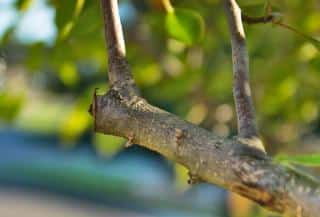

Although pruning is definitely a human invention, and trees can go without it to develop naturally, it presents the advantage of renewing the plant’s vigor and increasing its fruit productivity. Harness your fears and reach for the shears! If you follow these tips, you should quickly get familiar with this winter pruning procedure, and will get better at it as years go by.
“Pome” fruits often also go by the name “pip fruits“. It’s a particular group of trees of the Rosaceae family: Malinae (formerly Pomoidae). They are unique in that the fruits have a small number of pips surrounded by quite a lot of flesh. Apart from apple and pear, other examples include quince and medlar.
Pip fruit trees can be pruned in winter as long as it doesn’t freeze. Stone fruit trees don’t cope very well with winter pruning.

It will help your tree grow well. You can also have a clearer view when shaping these trees into espalier patterns.
In winter, it’s also the time to remove moss, lichen and old bark which are hiding places for all sorts of parasites and diseases. Typically, there are several different winter treatments to do this, with perfectly natural solutions!
Read also:
Take time to observe the different types of buds on pear and apple tree branches. Flower buds are short and stout, branch buds are longer and pointy. This should guide you in snipping branches off at the right spot.